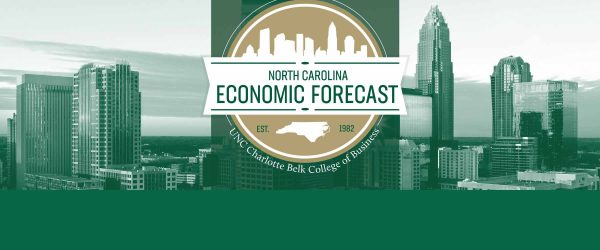Woes of possible recession persist

The United States likely won’t see a recession this year, but continued interest hikes could send the economy into a recession in 2023, according to John Connaughton, director of the North Carolina Economic Forecast.
“It depends almost entirely on what the Federal Reserve does in the next three or four months,” he explains.
The Federal Reserve, which meets two more times this year, announced another significant increase in interest rates on Wednesday afternoon. Based on the response to combat inflation in recent months, Connaughton says the economy will continue to shrink if more interest rate increases are implemented.
“There will be a significant impact to the economy in 2023 if we get two 50 basis point increases in November and December,” he said.
Connaughton stated there are two big stories to watch:
- The decline in U.S. Gross Domestic Product (GDP) and real North Carolina GDP in the first and second quarters. U.S. GDP dropped 1% and North Carolina GDP dropped 0.4%. The drop began when the Omicron variant of COVID-19 emerged, but continued through the second quarter as supply chain issues persisted
- The impact inflation is having on the economy and the Federal Reserve’s response. For example, in the first quarter, U.S. consumers are spending more on goods and services, but less goods and services are delivered due to inflation
The Belk College released the “Third Quarter North Carolina Economic Forecast Report” Thursday, Sept. 22, with Connaughton’s virtual presentation.
Gross Domestic Product Analysis
For 2022, annual real (inflation-adjusted) North Carolina GDP is expected to increase by 2.1% over the 2021 level, according to the report. This growth will represent the second full year of growth since COVID-19.
For the fourth quarter, GDP is expected to grow by an annualized rate of 1.3%.
This year, Connaughton forecasts an output increase for 10 of the state’s 15 economic sectors. The sectors with the strongest expected growth rates include:
- Hospitality and Leisure Services: 10.3%
- Information: 8.6%
- Agriculture: 7.8%
- Business and professional services: 6.2%
- Other: 3.7%
Three sectors are expected to experience growth rates below the overall state growth rate of 2.1%:
- Manufacturing: 2.1%
- Finance, insurance, and real estate: 1%
- Transportation, warehousing, and utilities: 1%
Employment
According to the report, all 14 of the state’s nonagricultural sectors are expected to experience employment increases during 2022. The sectors with the strongest expected employment increases are:
- Information: 6.0%
- Business and professional services: 5.8%
North Carolina employment is expected to reach 4,818,500 persons by December 2022, a 3.5% increase over the December 2021 employment level. The state is expected to add 162,400 net jobs in 2022.
North Carolina’s unemployment rate is expected to rise slightly to 3.6% by December 2022.
2023 Outlook
The North Carolina economy is expected to add 74,000 net jobs in 2023, driving unemployment up to 3.9% by December 2023.
All 15 of the state’s economic sectors are expected to experience output growth in 2023. The strongest expected growth sectors are:
- Hospitality and leisure services: 4.2%
- Information: 2.9%
- Other: 2.7%
North Carolina’s GDP for 2023 is expected to increase by an annualized real rate of 2.1%.
The North Carolina Economic Forecast, celebrating its 40th anniversary this year, is published quarterly by UNC Charlotte’s Belk College of Business. The full report and a recording of the presentation will be available at belkcollege.charlotte.edu/forecast.
The Fourth Quarter North Carolina Economic Forecast Report will be released in December.